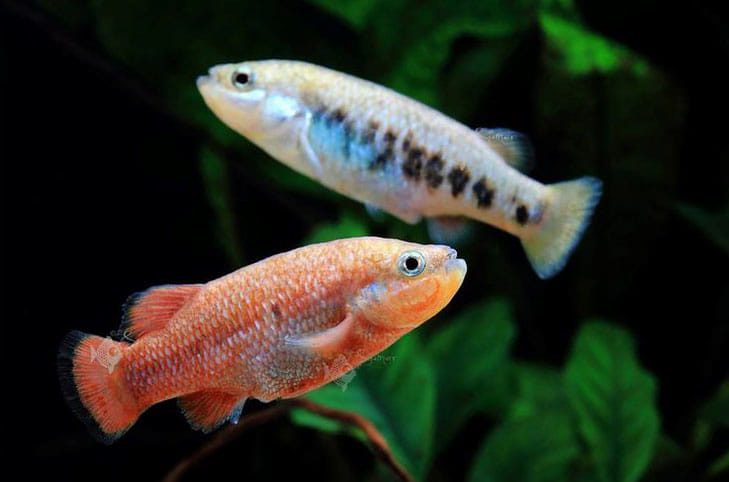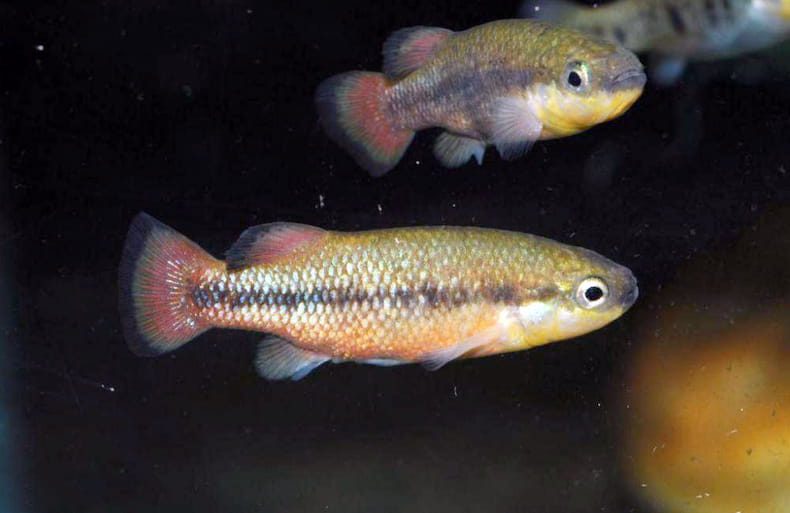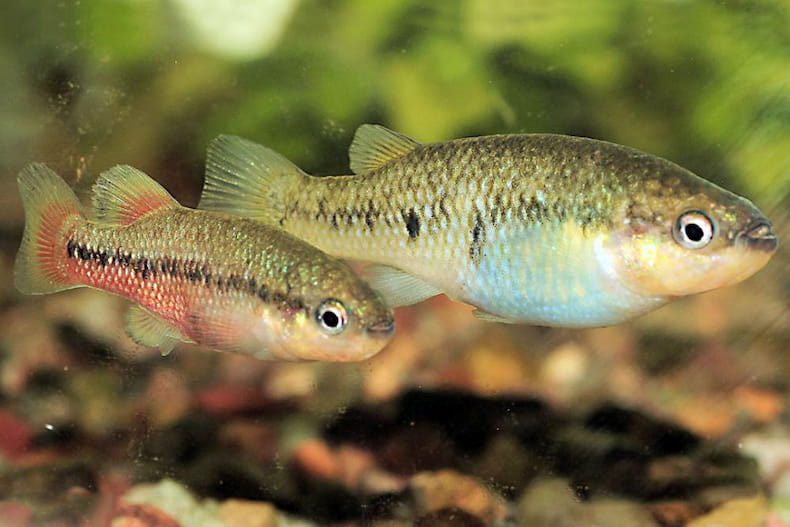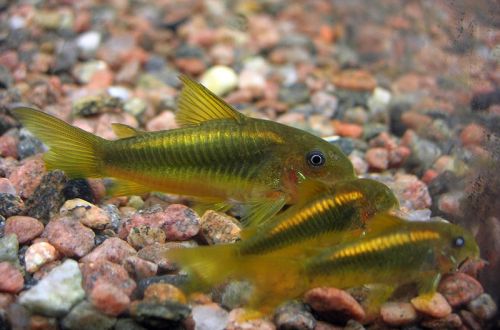
“Red Prince”
The Red Prince fish, scientific name Characodon lateralis, belongs to the Goodeidae family. Unpretentious and hardy species, easy to maintain and breed, and breeding forms are brightly colored. All this makes the fish an excellent candidate for a community aquarium. May be recommended for beginner aquarists.

Contents
Habitat
The exact range is not known and is simply referred to as “Central America”. For the first time, wild individuals were found in the basin of the small Mezquital River (Río San Pedro Mezquital) near the El Saltito waterfall in central Mexico. This region is characterized by an arid climate with steppe or semi-desert flora.
It lives at shallow depths, prefers regions with stagnant turbid water with abundant aquatic vegetation. The substrate, as a rule, consists of dense mud mixed with stones and rocks.
Currently, this species is under the threat of extinction due to human activities, which has led to water pollution and habitat change in general.
Brief information:
- The volume of the aquarium – from 100 liters.
- Temperature – 18-24°C
- Value pH — 6.0–8.0
- Water hardness – soft to medium hard (5-15 dGH)
- Substrate type – fine grained
- Lighting – moderate
- Brackish water – no
- Water movement is weak
- The size of the fish is 5–6 cm.
- Nutrition – meat feed with vegetable additives
- Temperament – conditionally peaceful
- Content alone or in a group
Description
Adults reach a length of 5–6 cm, while females are somewhat larger. Males in turn are more colorful, have bright golden-red tones, especially in breeding forms, and have a modified anal fin, known as andropodium, which is used to transfer semen during mating.

Food
In the wild, they feed on small invertebrates and diatoms. In a home aquarium, the basis of the diet should be live or frozen meat foods (bloodworm, daphnia, brine shrimp) in combination with herbal supplements. Or high-quality dry food with a high protein content. Dry foods are of secondary importance and are used to diversify the diet.
Maintenance and care, arrangement of the aquarium
It is advisable to use a shallow aquarium with a volume of 100 liters or more, which is enough for a small group of fish. The design should provide for fine-grained soil and many rooting and floating plants that form dense clusters. Other decorative elements are set at the discretion of the aquarist. The equipment, in particular the filtration system, should be set up and positioned so that it generates as little current as possible.

Fish “Red Prince” is not picky about the composition of the water, but needs its high quality, so regular (once a week) changes of 15–20% are mandatory.
Behavior and Compatibility
It calmly treats representatives of other species, goes well with many fish of a similar size that can live in similar conditions. Intraspecific relationships are built on the dominance of males in a certain territory. Sufficient space and abundance of vegetation will reduce the degree of aggression and avoid conflicts. Group content is allowed.
Breeding / breeding
Red Prince” refers to viviparous species, i.e. the fish do not lay eggs, but give birth to fully formed offspring, the entire incubation period takes place in the body of the female. The mating season lasts from March to September. The incubation period is 50–55 days, after which a dozen fairly large fry appear, already capable of accepting food such as Artemia nauplii. Parental instincts are poorly developed, adult fish can eat their offspring, so it is advisable to transplant juveniles into a separate tank.
Fish diseases
Health problems arise only in case of injuries or when kept in unsuitable conditions, which depresses the immune system and, as a result, provokes the occurrence of any disease. In the event of the appearance of the first symptoms, first of all, it is necessary to check the water for the excess of certain indicators or the presence of dangerous concentrations of toxic substances (nitrites, nitrates, ammonium, etc.). If deviations are found, bring all values back to normal and only then proceed with treatment. Read more about symptoms and treatments in the Aquarium Fish Diseases section.





